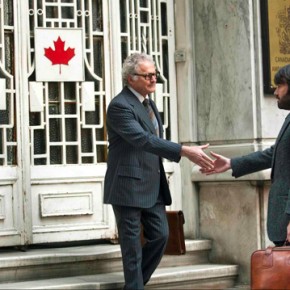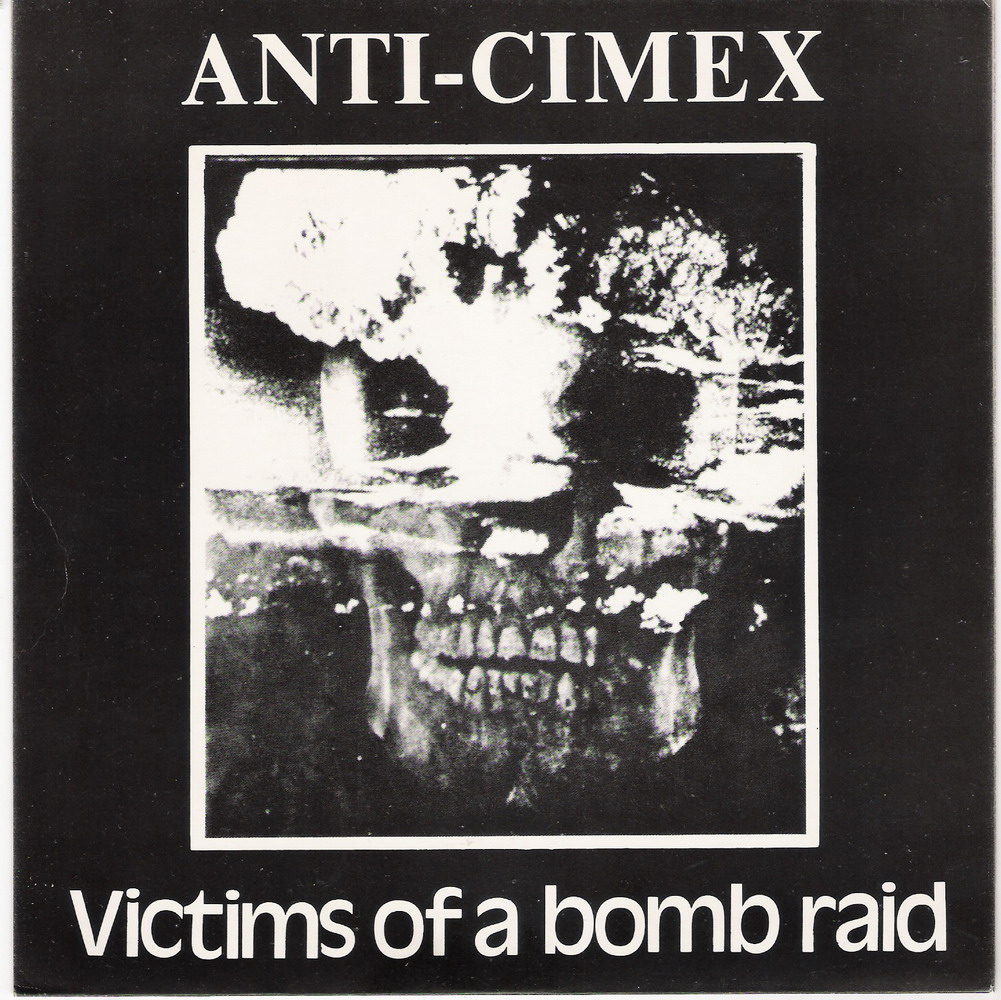Hard-coded into punk’s DNA is a contradiction worthy of Hegel: A desire to impact the mainstream combined with a disavowal of anything that achieves success. It’s a perfect formula for self-destruction. This core tension has prevented punk from achieving its highest ideals, and has caused the movement to die out several times over.
Both Hegel and Fichte could appreciate this self-defeating, “thesis versus antithesis” dynamic. On the one hand, since the 1970s, punk has optimistically aspired to influence the direction of culture – not just underground subculture, but the actual direction of culture at large. At its most aspirational, punk has indeed wanted to change the world.
But embedded within this aspiration is a self-destruct button. From the beginning, punk has also ironically resentfully derided anything that has become popular enough to have an impact on culture in any meaningful, real-world way — even when bands with punk backgrounds have succeeded on non-commercial terms (like Fugazi or others.) When something is too successful in the punk world, it is derided by trend-seekers as “played out,” or just flat-out lame, the province of common folks, akin to pearls being cast before swine. It becomes worthy of derision. This safely – and perversely – ensures that nothing successful is ever supported by “real” punks.
This core contradiction has fueled musical progression within punk’s own jealously guarded milieu. However, it has also ensured that punk culture remains a generally and largely ineffectual cultural cul-de-sac, a secretive ghetto within which to retreat, something that covets and fetishizes its own obscurity, even if that obscurity is enforced to the detriment of social change at large, in order to preserve its own overriding coolness, an overriding coolness which — or so it seems — must trump real-world social change at all costs, to better protect itself.
Punk’s First Death
As early as February 1977, London’s International Times proclaimed “punk is dead,” as Kill Your Pet Puppy collective member, and self-described “anarcho-goth-punk” Alistair Livingston reminded a few months ago at his excellent Green Galloway blog. Thirteen years after this first of what would come to be many punk deaths, punk was chronicled by Greil Marcus in Lipstick Traces (1989.) This was the book in which Marcus convincingly re-situated punk within the continuum of 20th century radical history, a history that extends backwards through 1960s French Situationism, 1920s German Dadaism, and vintage, raucous American Delta blues. In Lipstick Traces, Marcus notes that by the late 1970s the punk “subculture … had already been pronounced dead by those whose business it is to make such pronouncements: a once secret society that was diffused by headlines and [cultural] tourism.”
It’s worth quoting Greil Marcus at length in this regard:
“[I]n the beginning, punk was indeed a sort of secret society, dedicated not to the guarding of a secret but to its pursuit, a society based on a blind conviction that there was a secret to be found. Was it that once the secret was seemingly discovered, once punk became an ideology of protest and self-expression – once people knew what to expect, once they understood just what they would get when they paid their money, or what they would do to earn it – the story was ready for its footnotes? In the United States, primitive enclaves had formed across the country (nightclubs, fanzines, record stores, a half-dozen high school students here, a trio of artists there, a girl locked in her room staring at her new haircut in the mirror) though perhaps less in response to the thrill of hearing $10 import copies of the banned ‘Anarchy in the UK’ single than to newspaper and TV features about London teenagers mutilating their faces with common household objects. Real discoveries were taking place, out of nothing (‘The original scene,’ said a founder of the Los Angeles punk milieu, ‘was made of people who were taking chances and operating on obscure fragments of information.’).”
The original impetus “not to the guarding of a secret but to its pursuit, based on a blind conviction that there was a secret to be found” was forever quashed by the advent of the Internet and mp3 file sharing — something Greil Marcus had not foreseen in the 1980s, when he wrote his influential book. Marcus had successfully recast punk as the latest avatar of a century-long trajectory of undergound, subversive culture. He did not, however, predict the influence the Internet would have on making nothing — least of all, any subversive subculture — a secret any more.
Napster, Limewire, and – later – Soulseek, mp3 blogs, and Youtube, introduced access to a musical world where there are no secrets — where all secrets, indeed, are ultimately discovered. From this development, punk – or what continues to call itself “punk” – became one subculture among many other equally-situated, and equally benign, subcultures, kept alive on artificial respiration by new bands that recombined disparate aspects from punk’s past into new, Frankenstein-like creations. Whereas punk fans once suspected they were embarking on a journey where an ultimate revelation awaited them, punk per se now resembles a salad bar: Various ingredients are combined in ad hoc ways, almost always in a fashion that looks backward for guidance, rather than forward to something that awaits discovery. Look at, for example, the attempt by late 1990s “3rd wave ska-punk” bands to combine ska with street punk. Or in the more recent subgenre of “blackened thrash,” a modern combination of crust punk with black metal.
Greil Marcus’s Lipstick Traces is subtitled “A Secret History of the Twentieth Century,” but there will be no secret history of the twenty first century. The secrets that Marcus laid bare about punk’s roots and ideological predecessors are common knowledge today, and will forever be, thanks to blogs, bit torrent files of the most obscure underground cinema or rare footage of bands, and other new file sharing innovations. Everything will be constantly laid bare in the self-imposed Panopticon of social media sites, Wikipedia-type encyclopedia pages, and other information-sharing sites onto which people willingly reveal all, down to the most arcane minutiae and quotidian detail. This is a far cry from the prior world of snail mailing for xerox’d zines, finding random and isolated penpals across various countries, and responding to classified ads in the back of Maximum Rock ‘n Roll in the 1980s. “The original scene,” Greil Marcus quoted, “was made of people who were taking chances and operating on obscure fragments of information.” There are no “obscure fragments of information” now.
Punk died its first death in the late 1970s, splitting – like a single-celled organism — into two subsequent life forms. As Jon Savage noted in England’s Dreaming, on one side of this split was the social realist camp, which would become the hardcore, street punk, anarcho, and Oi! movements. And on the other side of this split was the artsy camp. This would become the postpunk, goth, and new wave scenes. Punk had died its first death. The corpse was rotting by 1978.
Punk’s Second Death
Punk’s second death came about in the mid-1980s, after the hardcore scene in the US convinced folks it was the legitimate heir to the mid-70s punk explosion, and then proceeded to itself unravel.
In fact, hardcore punk’s legitimacy as punk’s next avatar could be called into question in any number of ways. It is only one possible history of punk in a multiplicity of narratives that could be written. But the social realists won the contest of ideas, and thus hardcore, anarcho-punk, and street punk carried the sacred punk mantle forward while sloughing off the postpunk and new wave elements. Those subgenres became something else besides punk.
The movie American Hardcore, based on the Stephen Blush book of the same name, is illustrative of this. The film trails off around 1985, something criticized by latter day, would-be hardcore historians, even though bands from the early ’80s (like SSD, Article of Faith, and The Faith) will generally concede something important had changed by the mid and especially late 1980s in the direction of hardcore punk. In fact, by the late 1980s, post-hardcore (Fugazi and much of the DC hardcore scene,) crossover thrash (late ’80s DRI, Cryptic Slaughter, Corrosion of Conformity, and others,) grind (Napalm Death,) and “alternative rock” (Husker Du, Overwhelming Colorfast, etc.) had frayed the formerly monolithic movement into a million different directions. The glory days of hardcore had ended.
One important thing that happened in the late 1970s and early 1980s was the formalization of punk into definite political categories. Punk was initially an orgasmic, messy, uncategorizable cultural explosion of mutually contradictory tendencies. Visually, dayglo pinks and greens (X-Ray Spex) collided with fascist and communist imagery (Sex Pistols) and stark black military surplus (Crass) – or bondage — gear. Meanwhile, guitar-driven rock and roll (Ramones) mixed weirdly with androgynous, keyboard-driven experimentation (The Screamers;) and also, inflammatory and reactionary sentiments (Black Flag’s “White Minority,” or the original version of Siouxsie’s “Love in a Void”) were combined confusingly with Marxist and anti-capitalist motifs (The Dils’ “Class War” or anything by The Clash.) That was why punk was so genuinely scary to the public at large. It was a mess of conflicting imagery and sentiment, all of it intentionally provocative.
By the late 1970s, Jon Savage’s social realist punk camp had won the day, and punk bands like Sham 69 and Stiff Little Fingers were playing support benefits for Rock Against Racism in England, or supporting other political causes that had a formal organization. (The Sex Pistols even played a show or two for striking firefighters, as shown in Julien Temple’s The Filth and Fury.) By the 1980s, British punk bands were playing Campaign for Nuclear Disarmament (CND) rallies, and most of them had adopted an anti-Thatcher, anti-Tory stance. (Not to mention the increasingly animal rights-themed and vegetarian motifs that would pop up in punk songs throughout the 1980s.)
In the US, American hardcore bands had adopted an anti-Reagan stance, and were forming — with support from the leftist Yippies of the 1970s — Rock Against Reagan concerts. Bands like the Dead Kennedys, Discharge, MDC, Crass, the Subhumans, Conflict, and Crucifix, had all injected serious political gravitas into what had formerly been a mainly cultural – not political – musical movement. Indeed, punk had become an explicitly leftwing movement by 1984, coincidentally augmenting leftist politics in general, much as the labor folk music of the IWW (Joe Hill, T-Bone Slim, etc.) buttressed the radical labor activists in the 1910s through the 1930s. In fact, Crass’s last show in 1984 was a benefit for striking miners. “Do they owe us a living?” Steve Ignorant rhetorically asked of the striking miners in the crowd of their last show, as heard on Best Before 1984. “Of course they fucking do!” Crass and the audience respond in unison.
At this time, any punk band that would have performed a pro-Thatcher benefit would not be considered “punk” at all – not for cultural or musical reasons, but for political reasons. Musically, a band could be playing Ramones-style punk rock all they wanted, but by 1984 that alone no longer made them “punk.” In fact, plenty of right-wing bands had adopted the punk musical format to advance right-wing politics (Skrewdriver and nationalist Oi!, for example.) By the 1980s, punk was not just a musical style; it was a multifaceted social movement. Bands like MDC and Crass, and fanzines like Maximum Rock and Roll, had ensured a solidly leftist political component was an essential part of punk rock.
In short, by the 1980s a dynamic had arisen within the punk scene that wanted to view punk as a teleological phenomenon. Punk had to advocate something. Punk songs increasingly took on the character of position papers. Songs were either “pro-” something (like animal rights, or labor unions, or unilateral disarmament) or they were “anti-” something (like military intervention in Central America, or racism, or poll taxes.) Punk bands began to be viewed less as self-contained artists and more like musical think tanks, cranking out political views cloaked in the form of rock and roll songs. This particular view of punk exists to this day.
Bands that did not explicitly state their views, whether through liner notes or in song lyrics, or in playing benefit shows, were increasingly seen as “sketchy.” Bands that continued to employ the same inflammatory cultural imagery that was used with great success by punk bands in the late 1970s were “called out” for “straddling the fence,” or for not getting with the times and taking a definite stand on this or that issue. The purely artistic was expected to be subservient to the political by the time the 1980s had ended.
Taking a step back and enlisting Greil Marcus’ analysis as a cue, it’s instructive to see what happened with the Surrealist art movement of the 1920s and 1930s in Europe. A similar subjugation of the artistic to the political occurred. As fascism became ascendant across Europe throughout the 1930s, many Surrealists and former Dadaists grew convinced that their art must be placed in the service of a political message against fascism. This was most notably symbolized in Georges Bataille — a transgressive author best known for the pornographic Story of the Eye — forming the anti-fascist Contre-Attaque (“Counterattack”) group. Bataille expended what little remaining cultural capital he had with Surrealists in the 1930s to get Andre Breton, the author of the Surrealist Manifesto, to dedicate himself to ensuring Surrealist artists would put their artistic talents into political advocacy. Although important Surrealists like Salvador Dali had supported fascism, Bataille wanted to harness art and put it into the service of a political agenda.
As Michel Surya wrote in his biography of Bataille, this “would have meant reassessing everything surrealism had been: its aesthetic choices and its choice of social revolution: in other words, making an absolute conception of liberty submit to a strict ideological discipline.” By the mid- and especially the late 1980s, punk had similarly come to resemble a panoply of ideologies (straight edge, the Krishna religion, anarcho-communism, vegetarianism) that happened to have rock bands (instead of policy wonks) espousing them.
Punk’s Third Death
1991: The Year Punk Broke — a documentary released by the David Geffen Company in 1992 — presaged a general sea change in the type of attention underground music started receiving. Although the film was about a group of bands whose “punk” appellation is questionable — Gumball, Dinosaur, Jr., Babes in Toyland, and other indie-type bands — renewed attention was focused onto DIY music by major labels. Suddenly, bands as disparate as Jesus Jones, Teenage Fanclub, and Mudhoney were all being called “punk” by the mainstream media. Many bought into it and a strange era began where alternative guitar rock became acsendant, much of it being referred to as “punk” whether it was in fact punk or not.
Throughout the 1990s, with the full, culturally disruptive power of the Internet still to come, and with the music business still driven very much by things like radio airplay and producing hit singles, it finally became possible to start a punk-ish band and become a millionaire. Green Day and various mall-punk type bands would go on to prove this. As the cultural mainstream appropriated punk-type fashion, imagery, and slogans for corporate use (as was often documented wonderfully in The Baffler magazine of this era,) it became increasingly hard to remember that in the USA, the Sex Pistols’ Nevermind the Bollocks had only reached 106 on the charts in the 1970s. In fact, Nevermind the Bollocks did not go gold in the USA until the early 1990s, thanks to the success of Nirvana’s Nevermind.
Bands like Econochrist, Born Against, Rorschach, and The Pist toughed it out throughout the 1990s, but a glut of all things punk otherwise occurred in the culture. Music critics increasingly referred to new bands in terms of their relation to punk. VH1-style documentaries about punk proliferated on cable (generally, hilariously painting the movement as something that saw its culmination in early 1990s grunge;) the phenomenon of the “punk academic” became possible — that is, punks in grad student programs, or who began authoring critical books about punk and hardcore history — something that before the 1990s was simply not possible. Labels proliferated, as did cases of bands selling out to major labels.
In 1996, the Sex Pistols reunited for a twentieth anniversary tour, playing with odd bands like the industrial rock unit Gravity Kills. Ska-punk bands like the Suicide Machines, post-rock like Neurosis, rap-metal like Downset, cartoonish skate punk like Lagwagon, powerviolence like Dropdead, and sludgy metalcore like Earth Crisis — all of it was somehow “punk.” If Greil Marcus had once described punk as a secret society, the 1990s had killed any hope of secrecy, and thus of any true sort of punk.
Punk’s Fourth Death
The advent of mp3 file sharing and the phenomenon of blogs themed around previously obscure, niche areas of music opened the floodgates for a corrective to the excess of the 1990s, promising to reign in the sorry sight of, for example, metal hip-hop bands like 25 Ta Life being included on documentaries about New York hardcore. Filesharing has, on the one hand, reintroduced a cult of obscurity into punk while ironically ensuring that nothing is really obscure. Vinyl collecting had always been fairly fetishistic, but it was also practical: To hear a record in the 1980s, you had to own it (or borrow it.) Now, owning or physically possessing a record or CD was no longer a prerequisite to enjoying music, and vinyl collecting’s fully fetishistic character has come into its own.
Thanks to Internet filesharing, previously quasi-obscure punk bands like Rudimentary Peni have come to be regarded as “entry level” bands by younger teens and tweens, who are used to being able to immediately listen to the most limited edition, small label releases from the 1980s. The literal accessibility of the music has caused punk to assume an increasing nostalgic and backwards-looking character. Bands generally try to mimic the way a certain band sounded from a certain scene sometime in the 1980s, seemingly to confuse the listener into thinking that that band is actually from the past. In the 1980s, punk bands like Bad Religion or Abrasive Wheels did not care to try to sound like bands from twenty years’ previous. Indeed, the future awaited and nostalgia — which is what their parents had for days of listening to classic rock — was to be avoided at all costs.
Rather than forging ahead to completely uncharted territory, punk bands nowadays either act as basically cover bands, or they recombine various elements from past bands’ sounds into a new, cobbled-together whole, unlike the original punk bands from the 1977-1982 era. Stubbornly, like rock and roll itself, punk refuses to ultimately die. As with the genres of the blues, jazz, or country, there will probably always be punk bands, and there will always be a built-in fan base for bands that play that style of music. But unlike the 1980s and early 1990s, when it seemed as if punk could become a catalyzing protest music that would help lead the way to genuine social change, nowadays the genre, which will turn forty in five years, has become something wherein “people know what to expect [and] just what they will get when they pay their money” (or download) a new punk product.
Alice Bag and the Cambridge Apostles photo courtesy of Alice Bag. Published under a Creative Commons license.






Really nice assessment of the ebbs and flows in the life cycle of “punk”. Your reading of 80s us punk reveals that you must have had exposure tons lot of the same portions of the scene that I did, as it rings absolutely true.
I’d take exception to the idea that punk was TRYing to keep itself secret, or unknown back before file sharing, and that digital downloading has caused there to BE so secret enclaves of culture/music. I’d argue that the sheer mass of content that Is now “freely” available creates a situation in which there are still “pockets” or “small worlds” of social, cultural activity and political discourse that are still, effectively, almost as invisible to or isolated from then ”mainstream” as they were in the 80s. The hope in the 80s, though, was that these thoughts might pop up and Become mainstream in some fantastic burst of political awareness and – the 70s revolution come true. Well, that was an illusion as much as the hallucinatory visions of the 60s/70’s hippies before them. But we knew that…even inside it in the 80s.
I think the hope now is that the potential easy access to “alternative” (to use a term that dares me clearly) politics and social critique through the vast networks of file sharing mechanisms, at least holds some hope that these thoughts may take root in a few individuals….and may grow. But now, the challenge isn’t findingnoutnthat these thoughts Simply exist somewhere out there, as it was in the 80s, but the low chance of stumbling upon them whilen wading through the tepid, shallow, but emmensely wide oceans of available media.
this is a great article. very well-written and well-thought-out. thanks.